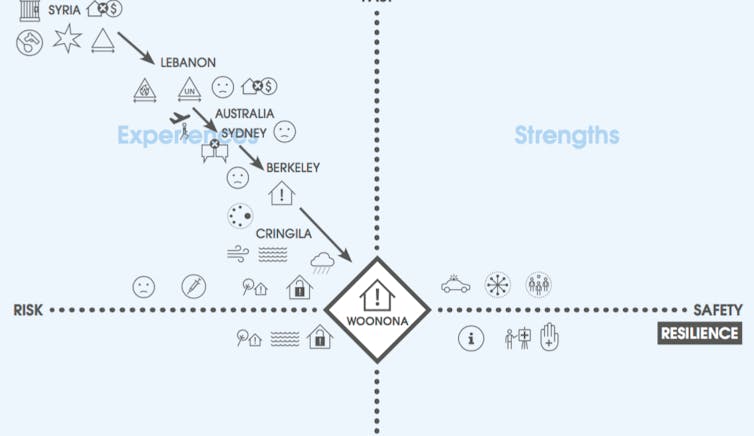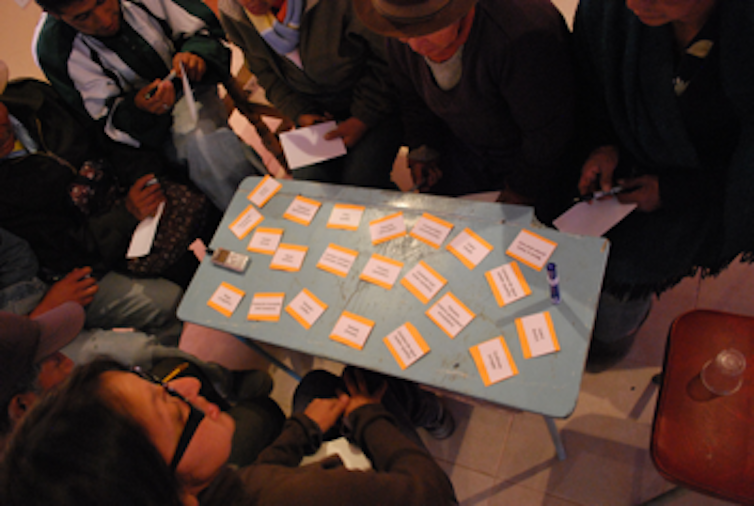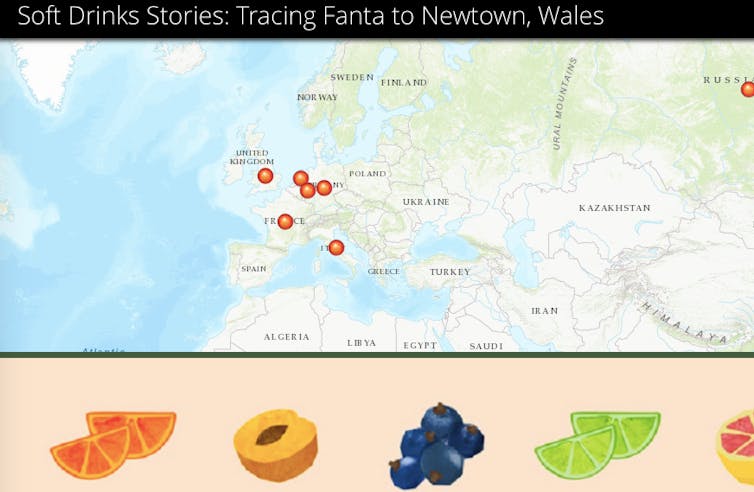August 15, 2018
How 'story maps' redraw the world using people's real-life experiences
Story maps can help policymakers better understand and respond to the needs of recently resettled refugees.
Maps are an important part of our everyday lives.
We use them for driving directions, to look up restaurants or stores and . We can even use smartphone maps to when theyÔÇÖre out on the town.
What digital mapping tools like Google Maps or generally donÔÇÖt tell us is how a certain street got its name, or what issues are of critical cultural importance to a community.
But ÔÇťÔÇŁ ÔÇô an interactive form of drawing the world around us and an increasingly popular form of mapping ÔÇô can do all this and more.
As geographers, we believe story maps can also help people better understand such complex global issues as human rights, climate change and refugee resettlement.
Here are a few examples.
Untold histories
Story maps typically combine geographic maps with narrative text, images and multimedia content to tell a richer, often hidden story of a given place.
, a geographer at the University of Washington and an LGBTQ historian, has transformed a printed walking tour of SeattleÔÇÖs Pioneer Square into a digitized, interactive .
The Pioneer Square walking tour, first created by the in the late 1990s, was designed simply to commemorate the areaÔÇÖs history.
ÔÇťIt was conducted a couple of times a year to engage the public with a queer history that is not obvious or apparent,ÔÇŁ Barr explains.
In 2017, Barr decided to make the tour available to a wider audience and offer it in a more interactive format. He took it online and added historical photographs from newspaper archives about Occidental Square, the site of major protests against a , and on the backstory behind every gay bar in the area.
People can now learn more about how each stop on the walk has helped build SeattleÔÇÖs local LGBTQ community since the 1890s.
ÔÇťDigitizing the tour allowed me to make this important local history more accessible and engagingÔÇŁ for a broader audience, he says.
Personal journeys
Story maps can provide insights into the experiences of refugees as they settle into new lives far from home.
In 2017, as part of at AustraliaÔÇÖs University of ╠ý├└┤ź├Żapp, interviews were conducted with 26 people from the Democratic Republic of Congo, Iran, Iraq, Liberia, Myanmar, Syria and Uganda about their experience of resettling in the of New South Wales, Australia.
The Illawarra is safer than the war zones the refugees fled. But it is also home to a , including flooding, bush fires, hail, strong winds and lightning. Ten of the reported being caught unaware by severe weather during their first years of living in the Illawarra.
The detailed, hand-drawn charts that emerged from the interviews plot refugeesÔÇÖ experiences en route to Australia, showing their journey from ÔÇťrisksÔÇŁ ÔÇô flooding, fire and the like ÔÇô to the ÔÇťsafetyÔÇŁ of family, neighbors and community.

These charts, now available , offer into how refugees apply their past disaster-survival experience to stay safe in Australia.
City councils, local emergency agencies and community groups are now working directly with former refugees to design more .
Mapping climate change
Story mapping can even be done in places with little or no by building on the visual and oral mapping traditions of local communities.
In 2016, University of Washington professor , working with Ecuadorian subsistence farmers, used Post-It notes to facilitate a community discussion on climate change.

ÔÇťThe locals have a very limited understanding of maps,ÔÇŁ Jung told us. ÔÇťAnd they really couldnÔÇÖt precisely point out where climate changes are happening.ÔÇŁ
So Jung asked 16 male and female farmers from the Ticatilin-Marcal├│ Grande community in the mountainous central Ecuadorian province of Cotopaxi to answer three questions: Has your community changed since you were a child? How has the climate changed since then? Are there any past climate-related events that affected you the most?
They wrote their answers on Post-It notes and stuck them on a map of the area.
The result was a deeply personal and geographically detailed narrative about climate change in this swath of the high Andes.
Farmers observed that local grasslands were drying up, making food and water for livestock harder to find. Some said they had changed how they farmed in response. Others prayed before heading to their fields for the harvest, understanding severe climate events as a punishment from ÔÇťtaitita (father) God.ÔÇŁ
Jung hopes his story maps ÔÇô along with the that they helped inform ÔÇô can help Ecuadorian policymakers design responsive and relevant climate policies for the Andean region.
What story maps can teach us next
The three projects outlined here are just a snapshot of a much broader universe of story maps.
Story mapping is a versatile tool for engaging with people whose tales often go untold, informing how communities and governments think about the history and future of the places they call home.

By making uber-local or highly personal experiences more visible, story maps have the potential to tell a more nuanced, complex story about some of the most important issues of the day, from to migration and beyond.
![]() Our research suggests its power as a storytelling tool, not for just geographers but activists, policymakers and neighborhoods alike.
Our research suggests its power as a storytelling tool, not for just geographers but activists, policymakers and neighborhoods alike.
, PhD Candidate, Department of Geography, and , PhD Candidate, Australian Centre for Culture, Environment, Society and Space,
This article was originally published on . Read the .
╠ý├└┤ź├Żapp academics exercise academic freedom by providing expert commentary, opinion and analysis on a range of ongoing social issues and current affairs. This expert commentary reflects the views of those individual academics and does not necessarily reflect the views or policy positions of the University of ╠ý├└┤ź├Żapp.
:format(jpg)/prod01/channel_3/assets/live-migration/www/images/content/groups/public/web/media/documents/mm/uow250440.jpg)